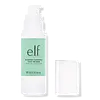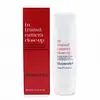What's inside
What's inside
 Key Ingredients
Key Ingredients

 Benefits
Benefits

 Concerns
Concerns

 Ingredients Side-by-side
Ingredients Side-by-side

Salicylic Acid 2%
MaskingWater
Skin ConditioningHydrogenated Polyisobutene
EmollientDimethicone
EmollientButylene Glycol
HumectantPropylene Glycol
HumectantEthoxydiglycol
HumectantGlyceryl Stearate
EmollientPEG-100 Stearate
Magnesium Aluminum Silicate
AbsorbentCetearyl Alcohol
EmollientTriethanolamine
BufferingPolyacrylamide
C13-14 Isoparaffin
EmollientLaureth-7
EmulsifyingStearic Acid
CleansingVp/Hexadecene Copolymer
Tocopheryl Acetate
AntioxidantXanthan Gum
EmulsifyingSilica
AbrasiveDisodium EDTA
Panthenol
Skin ConditioningRosmarinus Officinalis Extract
AntimicrobialThymus Vulgaris Leaf Extract
Skin ProtectingCamellia Sinensis Leaf Extract
AntimicrobialCitrus Limon Fruit Extract
MaskingPhenoxyethanol
PreservativeCaprylyl Glycol
EmollientSalicylic Acid 2%, Water, Hydrogenated Polyisobutene, Dimethicone, Butylene Glycol, Propylene Glycol, Ethoxydiglycol, Glyceryl Stearate, PEG-100 Stearate, Magnesium Aluminum Silicate, Cetearyl Alcohol, Triethanolamine, Polyacrylamide, C13-14 Isoparaffin, Laureth-7, Stearic Acid, Vp/Hexadecene Copolymer, Tocopheryl Acetate, Xanthan Gum, Silica, Disodium EDTA, Panthenol, Rosmarinus Officinalis Extract, Thymus Vulgaris Leaf Extract, Camellia Sinensis Leaf Extract, Citrus Limon Fruit Extract, Phenoxyethanol, Caprylyl Glycol
Water
Skin ConditioningGlycerin
HumectantCetyl Alcohol
EmollientStearic Acid
CleansingAloe Barbadensis Leaf Extract
EmollientButyrospermum Parkii Butter
Skin ConditioningCaprylic/Capric Triglyceride
MaskingGlyceryl Stearate
EmollientChondrus Crispus Extract
Skin ConditioningArgania Spinosa Kernel Oil
EmollientBorago Officinalis Seed Oil
EmollientCaffeine
Skin ConditioningSodium Hyaluronate
HumectantSorbitan Stearate
EmulsifyingRosa Damascena Flower Oil
MaskingPhenoxyethanol
PreservativeCitrus Aurantium Amara Flower Oil
MaskingDimethicone
EmollientCeteareth-20
CleansingEuphrasia Officinalis Extract
AntimicrobialHydroxypropylcellulose
EmulsifyingBenzyl Alcohol
PerfumingMalva Sylvestris Extract
AstringentTriethanolamine
BufferingPotassium Sorbate
PreservativeAlcohol Denat.
AntimicrobialTocopherol
AntioxidantAchillea Millefolium Extract
CleansingAlchemilla Vulgaris Extract
AstringentAscorbyl Palmitate
AntioxidantAsparagopsis Armata Extract
Skin ProtectingBisabolol
MaskingMelissa Officinalis Leaf Extract
Skin ConditioningMentha Piperita Leaf Extract
Skin ConditioningPhospholipids
Skin ConditioningPrimula Veris Extract
Skin ConditioningRetinyl Palmitate
Skin ConditioningTocopheryl Acetate
AntioxidantVeronica Officinalis Extract
Skin ConditioningCI 77891
Cosmetic ColorantMica
Cosmetic ColorantIodopropynyl Butylcarbamate
PreservativeSodium Gluconate
Skin ConditioningSodium Hydroxymethylglycinate
PreservativeChlorphenesin
AntimicrobialWater, Glycerin, Cetyl Alcohol, Stearic Acid, Aloe Barbadensis Leaf Extract, Butyrospermum Parkii Butter, Caprylic/Capric Triglyceride, Glyceryl Stearate, Chondrus Crispus Extract, Argania Spinosa Kernel Oil, Borago Officinalis Seed Oil, Caffeine, Sodium Hyaluronate, Sorbitan Stearate, Rosa Damascena Flower Oil, Phenoxyethanol, Citrus Aurantium Amara Flower Oil, Dimethicone, Ceteareth-20, Euphrasia Officinalis Extract, Hydroxypropylcellulose, Benzyl Alcohol, Malva Sylvestris Extract, Triethanolamine, Potassium Sorbate, Alcohol Denat., Tocopherol, Achillea Millefolium Extract, Alchemilla Vulgaris Extract, Ascorbyl Palmitate, Asparagopsis Armata Extract, Bisabolol, Melissa Officinalis Leaf Extract, Mentha Piperita Leaf Extract, Phospholipids, Primula Veris Extract, Retinyl Palmitate, Tocopheryl Acetate, Veronica Officinalis Extract, CI 77891, Mica, Iodopropynyl Butylcarbamate, Sodium Gluconate, Sodium Hydroxymethylglycinate, Chlorphenesin
Ingredients Explained
These ingredients are found in both products.
Ingredients higher up in an ingredient list are typically present in a larger amount.
Dimethicone is a type of synthetic silicone created from natural materials such as quartz.
What it does:
Dimethicone comes in different viscosities:
Depending on the viscosity, dimethicone has different properties.
Ingredients lists don't always show which type is used, so we recommend reaching out to the brand if you have questions about the viscosity.
This ingredient is unlikely to cause irritation because it does not get absorbed into skin. However, people with silicone allergies should be careful about using this ingredient.
Note: Dimethicone may contribute to pilling. This is because it is not oil or water soluble, so pilling may occur when layered with products. When mixed with heavy oils in a formula, the outcome is also quite greasy.
Learn more about DimethiconeGlyceryl Stearate is a mix of glycerin and stearic acid.
It is used to stabilize the mixing of water and oil ingredients. By preventing these ingredients from separating, it can help elongate shelf life. It can also help thicken the product's texture.
As an emollient, it helps soften skin and supports barrier-replenishing ingredients.
In cosmetics, Glyceryl Stearate is often made from vegetable oils or synthetically produced.
This ingredient may not be fungal-acne safe
Fun fact: The human body also creates Glyceryl Stearate naturally.
Learn more about Glyceryl StearatePhenoxyethanol is a preservative that has germicide, antimicrobial, and aromatic properties. Studies show that phenoxyethanol can prevent microbial growth. By itself, it has a scent that is similar to that of a rose.
It's often used in formulations along with Caprylyl Glycol to preserve the shelf life of products.
Stearic Acid is a fatty acid. It is an emollient, emulsifier, and texture enhancer.
As an emollient, stearic acid helps soften skin. It aids the skin's protective barrier by preventing water loss. It also provides a gentle cleansing effect without stripping away natural oils.
Stearic acid may also be used to enhance the texture of products. It can add volume and stabilize ingredients such as water and oil. This can help water and oil ingredients from separating.
Sources of stearic acid include animal or vegetable fats/oils such as coconut or shea. It can be naturally found in butter, cocoa butter, shea butter, vegetable fats, and animal tallow.
This ingredient may not be Malassezia folliculitis, or fungal-acne safe.
Learn more about Stearic AcidTocopheryl Acetate is AKA Vitamin E. It is an antioxidant and protects your skin from free radicals. Free radicals damage the skin by breaking down collagen.
One study found using Tocopheryl Acetate with Vitamin C decreased the number of sunburned cells.
Tocopheryl Acetate is commonly found in both skincare and dietary supplements.
Learn more about Tocopheryl AcetateTriethanolamine is an emulsifier and pH adjuster. It is created using ethylene oxide and ammonia. This gives Triethanolamine a nitrogen core and a similar scent to ammonia.
As an emulsifier, it prevents ingredients from separating and enhances texture by adding volume to a product.
PH adjusters are common in cosmetic products. The pH of a product can affect the effectiveness of other ingredients. A product with a high pH may also irritate the skin.
Learn more about TriethanolamineWater. It's the most common cosmetic ingredient of all. You'll usually see it at the top of ingredient lists, meaning that it makes up the largest part of the product.
So why is it so popular? Water most often acts as a solvent - this means that it helps dissolve other ingredients into the formulation.
You'll also recognize water as that liquid we all need to stay alive. If you see this, drink a glass of water. Stay hydrated!
Learn more about Water